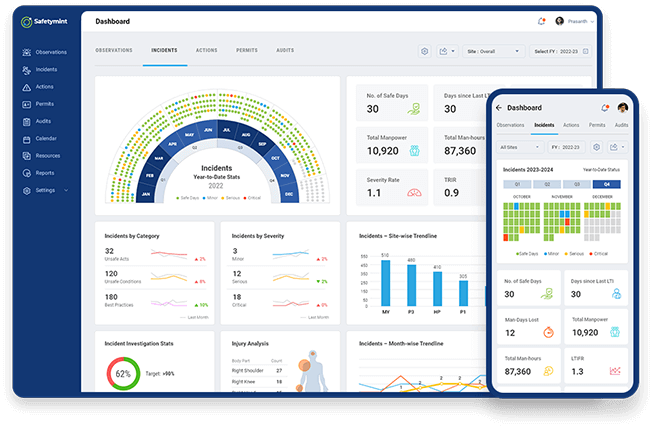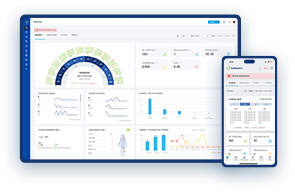
Impact of Cloud Technology in Safety Management
Before the advent of cloud technology, EHS management was a manual and often cumbersome process. Critical information was trapped in paper forms and localized computer systems, making it difficult to share insights and respond quickly to safety incidents.
This traditional approach had significant drawbacks, including slow response times, challenges in data analysis, and difficulties in updating safety procedures. As a result, organizations faced inefficiencies and heightened risks.
Cloud technology marks a revolutionary shift in managing safety. It transforms these outdated practices into a streamlined, integrated system, enabling real-time data analysis, mobile access, and seamless updates, setting the stage for a new era in safety management.
5 Areas Where Cloud Technology Has Made the Most Impact
Cloud technology has revolutionized safety management in several key areas. This section explores four crucial aspects where its impact has been most profound, enhancing operational efficiency, data accessibility, and overall safety outcomes for organizations across the globe.
1. Real-Time Data Analysis
Cloud technology enables the analysis of safety data in real-time, providing immediate insights into potential hazards and incident trends. This capability allows for quicker decision-making and more effective preventive measures, significantly reducing the risk of accidents and ensuring a safer work environment.
2. Mobile Access
With cloud-based solutions, safety information and tools are accessible from anywhere, at any time, via mobile devices. This accessibility empowers employees to report incidents and access safety procedures instantly, enhancing the culture of safety across the organization.
3. Seamless System Integrations
Cloud platforms facilitate the integration of various safety management tools and systems, creating a unified ecosystem. This integration improves data accuracy, eliminates redundancies, and streamlines workflows, making safety management more efficient and effective.
4. Scalability and Flexibility
Cloud technology offers unmatched scalability and flexibility, allowing safety management systems to adapt to the evolving needs of a business. Whether scaling up for growth or adjusting to seasonal demands, cloud solutions ensure that safety management can keep pace with change, without compromising on performance or security.
5. Enhanced Collaboration and Communication
Cloud technology breaks down silos and fosters a culture of transparency and shared responsibility for safety. It enables seamless communication and collaboration across different departments, locations, and even with external stakeholders. This enhanced connectivity ensures that everyone has access to the latest safety information, training materials, and alerts, leading to a more proactive and responsive safety management approach.
Related read: Our listing of the best EHS Software.
Safetymint for Your Cloud Safety Management

Transitioning from traditional safety management systems to a highly secure and scalable cloud platform is seamless with Safetymint. Our platform is tailored to meet the unique needs of your organization, providing customized solutions that ensure your safety management processes are efficient, compliant, and up to date.
Whether you require on-premise deployment or prefer a managed cloud solution, Safetymint offers the flexibility to choose what best fits your business needs.
Hosted on Amazon Web Services (AWS), and capable of being deployed on other leading cloud platforms like Google Cloud and Microsoft Azure, Safetymint guarantees reliability, scalability, and top-tier security for your data across multiple environments. Our expertise in cloud technology ensures that your safety management system is not just a tool but a strategic asset, empowering you to manage safety with confidence and precision.
To discuss further, schedule an online meeting.

Ramesh Nair is the Founder and Principal Partner of Niyati Technologies, the company behind Safetymint.
He’s a dedicated advocate for workplace safety. Ramesh firmly believes that every individual deserves to return home safely after a day’s work. Safetymint, the innovative safety management software, emerged from this conviction. It’s a platform designed to streamline safety management, empower safety professionals, and enhance safety in workplaces.
Through his blog, Ramesh shares insights, best practices, and innovative solutions for workplace safety. Visit his social media profiles to follow him for regular updates.




